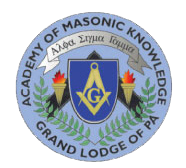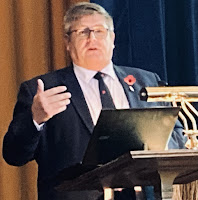Through the kind offices of Bro. Michael Arce and the team at Craftsmen Online, my review of Rémi Boyer’s Freemasonry as a Way of Awakening appears in that website’s blog section as of yesterday, and I reprint it here today. Make sure you peruse the entire site. The podcast episodes are essential listening. My thanks to the principals for welcoming my attempted writing.
FREEMASONRY AS A WAY OF AWAKENING
BY RÉMI BOYER
ROSE CIRCLE PUBLICATIONS
2020, 142 PAGES, PAPERBACK, $19.95
France’s Rémi Boyer has immersed himself for decades in studying philosophies and initiatory rites, among other things, and has authored a book for understanding Freemasonry. His knowledge and experience lead him to see Masonic initiation as metaphysical, and his prose is patient and instructive, but while Freemasonry as a Way of Awakening presents brilliantly conceived and stated ideas, it may confound Freemasons of the Anglo-American tradition—that is to say, most of us.
The first two paragraphs prime the reader:
“From the outset, let’s state the paradox. Initiation is not thought of, it manifests itself, it is realized, outside of all linearity conducive to thought in which the person de-realizes himself. Initiation is ‘unstoppable’ only in a state of non-thought. Silence is required. The more the literature devotes pages to the subject, the more the so-called initiatory orders multiply and the less they encounter, not only ‘initiates,’ but the ‘initiatables,’ who themselves are rare. Time is confusing while the initiatory ushers in fusion with Being.
“Initiation is by nature indefinable, elusive as the Spirit. Always, it is an initiation to one’s own original nature or ultimate reality, to the Real, to the Absolute, to the Divine, to what remains, no matter the words, since, precisely ‘there,’ there are no words.”
So, you see, 2B1ASK1 is not a consideration here. Boyer writes of and for the Egyptian Rite.
Likewise, our notions of receiving Light and of “making good men better” are blurry in Boyer’s vision. It’s not that they are contrary or unimportant goals, but this author likens initiation to art. He sees those two as avenues for “controlled madness, madness that allows the overcoming of the limits of the conditioned person.”
Masonic initiation, as Boyer recommends, is comprised of seven stages: the request for initiation; analysis of the request; passage under the blindfold; initiation instruction and orientation to the tradition; the “first” initiation; the initiatory work; and evaluation. As a blindfold conjures a familiar image and key aspect of our own rituals, I’ll skip to No. 3 and explain what Boyer intends. Employing the blindfold is not so much to keep the candidate in a state of darkness until the moment comes to bring him to Light; the blindfold here indicates “a plunge conducted by the candidate into the darkness of self.” It is akin to the alchemical decomposition of raw matter, and the unmasking heralds the start of awakening. “It must leave a slight crack in the continuity of the person” so that initiation will “turn this slight crack into a fissure” and the deeper the fissure, the deeper it descends into the depths of the psyche, and the more it allows the radiance of the light of Being.”
To be sure, there are passages of this book that ring clearly to the Anglo-American Masonic ear. Chapter 8 is titled “Dysfunctions in the Initiatory Process,” and it begins with a description familiar to many of us: “Internal struggles, competitions between organizations, the ‘professionalization’ and ‘commodification’ of initiation are commonplace. They reflect the radical break with traditional rules and principles and the lack of initiatory work by the leaders of these organizations more concerned with their careers than with their awakening.” Still, even these disappointments can be overcome, Boyer explains, by those on a quest who can see beyond the habits of fallible people.
Where our Freemasonry prescribes moral lessons to make a good man better, Boyer shows us a different way down the Masonic path. Actually, there isn’t a single path, as “the initiate is always at the center of an infinity of possible paths.” It’s about psychology, and the context of everything must be respected. The potential candidate for initiation must not be regarded only as someone seeking admittance, but he has to be considered as a person with a psyche shaped by age, social and economic status, family life, any traumatic past experience, and other factors that cause the interviewer “to harmonize himself” with the petitioner. Even the generations and geography are significant (time and space are important understandings in this book), as the author plainly points out how seeking Masonic membership in Paris today is very different from when the city was held by Nazi forces during World War II.
The lengthiest, by far, and possibly most illustrative chapter of the book is devoted to questions that you might have for the author. In fact, they are questions put to Boyer in seminars he conducted in Europe. From “What is the ultimate function of ritual?” to “What is the true nature of the work of a venerable master?” and fifteen others all serve to enlarge finer points from the main body of the text. And then follow nearly fifty pages of appendices that, sometimes, might qualify as Too Much Information!
Freemasonry as a Way of Awakening, published in English for the first time, truly can rouse the Brother Mason of the Preston-Webb-Cross tradition to see how some brethren in Europe tend to their labors. It’s never a question of one way is superior to another. As always with Boyer, context is crucial, as “initiation in a lake village does not rely on the myths that underlie a mountain initiation.”





































































































